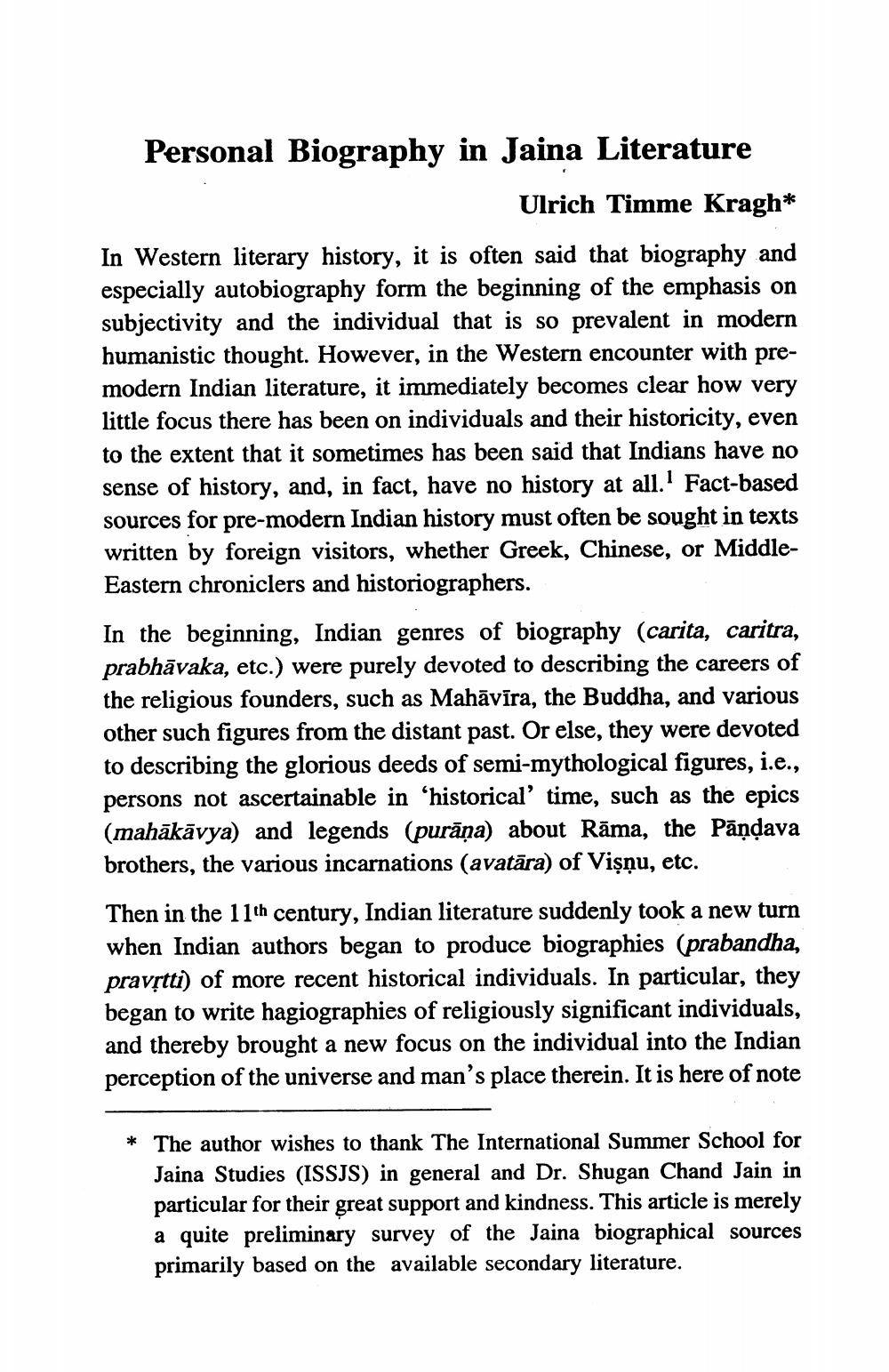________________
Personal Biography in Jaina Literature
Ulrich Timme Kragh* In Western literary history, it is often said that biography and especially autobiography form the beginning of the emphasis on subjectivity and the individual that is so prevalent in modern humanistic thought. However, in the Western encounter with premodern Indian literature, it immediately becomes clear how very little focus there has been on individuals and their historicity, even to the extent that it sometimes has been said that Indians have no sense of history, and, in fact, have no history at all. Fact-based sources for pre-modern Indian history must often be sought in texts written by foreign visitors, whether Greek, Chinese, or MiddleEastern chroniclers and historiographers. In the beginning, Indian genres of biography (carita, caritra, prabhāvaka, etc.) were purely devoted to describing the careers of the religious founders, such as Mahāvīra, the Buddha, and various other such figures from the distant past. Or else, they were devoted to describing the glorious deeds of semi-mythological figures, i.e., persons not ascertainable in 'historical' time, such as the epics (mahākāvya) and legends (purāņa) about Rāma, the Pāņdava brothers, the various incarnations (avatāra) of Vişņu, etc.
Then in the 11th century, Indian literature suddenly took a new turn when Indian authors began to produce biographies (prabandha, pravstti) of more recent historical individuals. In particular, they began to write hagiographies of religiously significant individuals, and thereby brought a new focus on the individual into the Indian perception of the universe and man's place therein. It is here of note
* The author wishes to thank The International Summer School for
Jaina Studies (ISSJS) in general and Dr. Shugan Chand Jain in particular for their great support and kindness. This article is merely a quite preliminary survey of the Jaina biographical sources primarily based on the available secondary literature.




